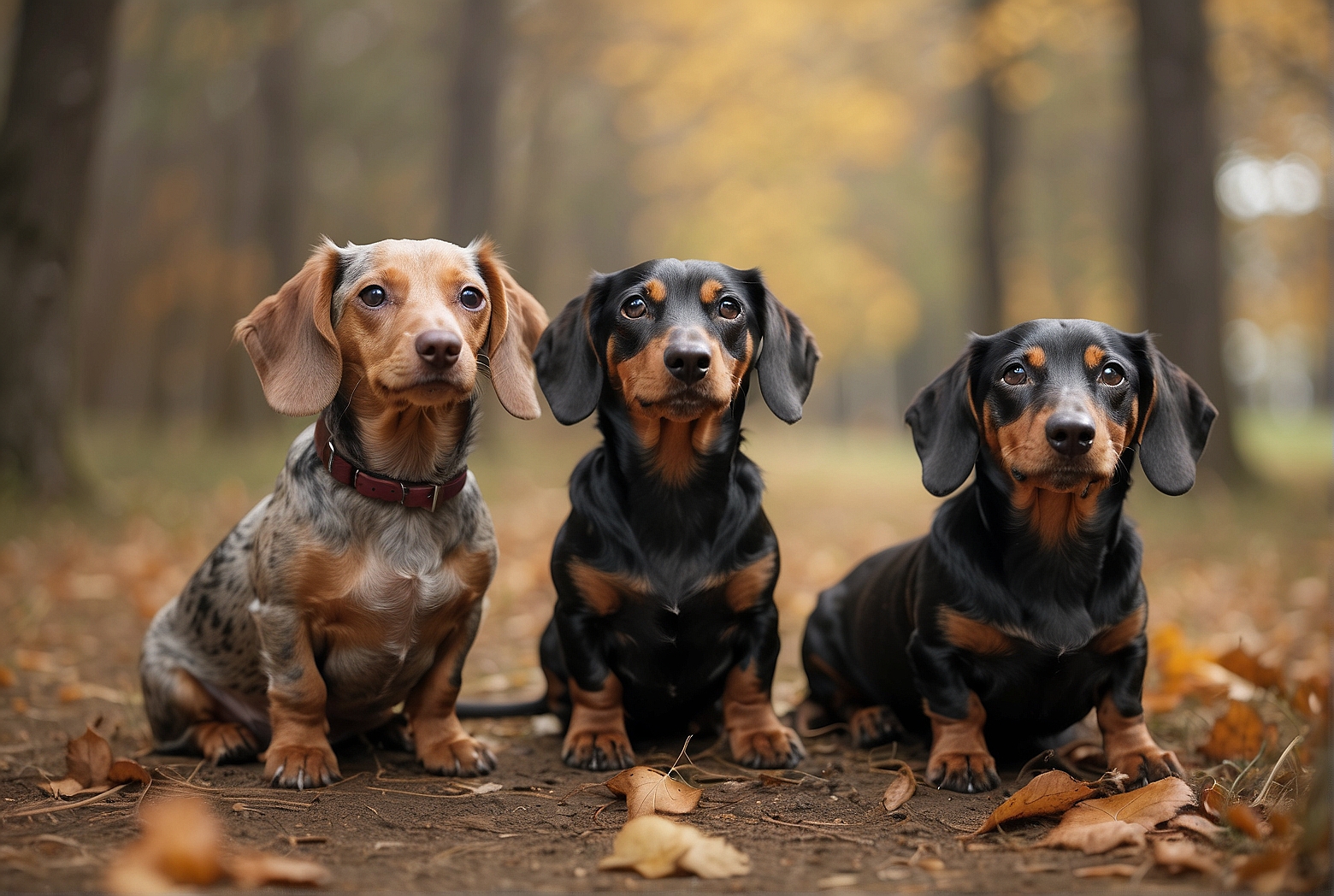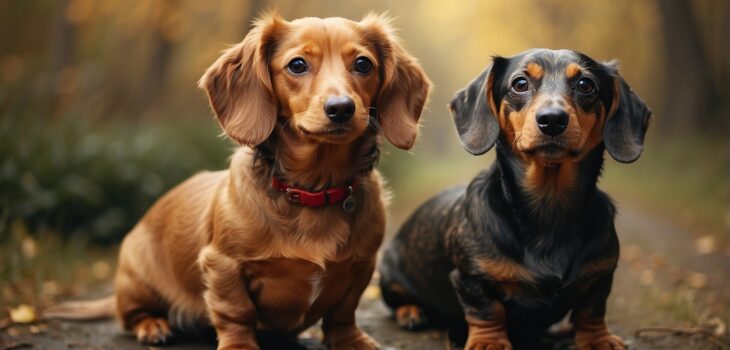Don’t fret, because in this article, we will explore whether Dachshunds can indeed get along with other dogs. The social dynamics between different dog breeds can be quite intriguing, and understanding how these adorable and sometimes stubborn Dachshunds interact with their four-legged counterparts will provide valuable insights. From their friendly demeanor to their territorial tendencies, we’ll uncover the factors that contribute to their sociability with other dogs. So, if you’ve ever wondered if your Dachshund can make some furry friends at the dog park or within your own household, you’ve come to the right place. Let’s embark on this delightful journey to discover the truth behind their canine companionship skills.
Introduction
Dachshunds, also known as wiener dogs or sausage dogs, are beloved for their unique appearance and playful personalities. These small, long-bodied dogs have a reputation for being loyal, adventurous, and friendly. However, like any breed, their temperament can vary from individual to individual. In this article, we will explore the temperament of dachshunds and their interactions with other dogs, providing you with a comprehensive understanding of how they can get along with their furry companions.
Understanding Dachshund Temperament
Dachshunds are known for their bold and independent nature. They are intelligent dogs with a strong sense of determination, which can sometimes translate into stubbornness. However, their confidence and tenacity also make them resilient and enjoyable companions. Dachshunds are often described as being curious, lively, and affectionate towards their owners. Their playful nature and lively spirit make them popular with families and individuals alike.
Factors Affecting Dachshund Interactions with Other Dogs
When it comes to interactions with other dogs, there are several factors that can influence the behavior of dachshunds. One important factor is their socialization history. Dachshunds that have been properly socialized from a young age tend to be more comfortable and confident when encountering other dogs. On the other hand, dachshunds that have had limited exposure to other dogs may exhibit fear or aggression in unfamiliar situations.

Another factor to consider is the individual dachshund’s personality and temperament. Some dachshunds are naturally more sociable and outgoing, while others may be more reserved or wary of strangers and unfamiliar dogs. Understanding and respecting the unique temperament of your dachshund can help you navigate their interactions with other dogs more effectively.
Socialization
Socialization is a crucial aspect of a dachshund’s development and plays a significant role in shaping their interactions with other dogs. Early and ongoing socialization helps dachshunds become familiar with different environments, people, and dogs. By exposing them to a variety of positive experiences, such as puppy socialization classes and controlled playdates with well-behaved dogs, you can help your dachshund build confidence and develop appropriate social skills.
It’s important to note that socialization doesn’t just happen during puppyhood. Continuously exposing your adult dachshund to new situations, people, and dogs can help prevent fear-based or aggressive behaviors from developing. Regular outings to dog parks or supervised playgroups can provide valuable opportunities for your dachshund to interact with other dogs in a controlled environment.
Dachshunds and Aggression
It’s essential to acknowledge that some dachshunds may display aggression towards other dogs. Aggression can manifest in various forms, such as growling, snarling, snapping, or even biting. It’s crucial to understand that aggressive behavior in dachshunds should not be taken lightly and should be addressed by a professional dog trainer or behaviorist.

Aggressive behavior can stem from fear, anxiety, territoriality, or a lack of socialization. Identifying the underlying cause of aggression is crucial in developing a tailored behavior modification plan. With patience, consistency, and professional guidance, many dachshunds with aggressive tendencies can learn to coexist peacefully with other dogs.
Compatibility with Different Breeds
The compatibility between dachshunds and other dog breeds largely depends on the individual temperament of both dogs involved. Dachshunds can generally get along well with other breeds if they are properly socialized and introduced in a positive manner. However, it’s important to consider the size and energy levels of the other dog breeds.
Dachshunds may feel more comfortable around dogs that are closer to their size, as they are less intimidating. Additionally, energetic dog breeds, such as retrievers or border collies, might overwhelm a dachshund with their high energy levels. Matching the energy levels and play styles of the dogs can contribute to a more harmonious interaction between dachshunds and other breeds.
Training and Obedience
Training and obedience play a significant role in improving a dachshund’s interactions with other dogs. Basic obedience commands, such as sit, stay, and come, can provide you with control over your dachshund in challenging situations. Teaching your dachshund to focus on you even when there are distractions can help redirect their attention away from triggering or potentially tense encounters with other dogs.
Positive reinforcement training methods, such as rewarding good behavior with treats or praise, are effective in fostering a cooperative and responsive dachshund. Consistent training sessions and ongoing reinforcement are essential for maintaining good behavior and preventing any negative interactions with other dogs.
Introducing Dachshunds to Other Dogs
Introducing a dachshund to a new canine companion requires patience, supervision, and a gradual approach. Here are some tips and techniques to successfully introduce your dachshund to other dogs:
-
Neutral Territory: Choose a neutral location, such as a park or a fenced backyard, for the initial introduction. This can prevent territorial aggression and reduce any potential tension.
-
Controlled Environment: Use a leash for both dogs during the initial introduction to maintain control and prevent any undesirable behaviors. Allow them to get acquainted while keeping a safe distance.
-
Positive Reinforcement: Reward calm and friendly behavior from both dogs with treats, praise, or play. This positive association can help establish a positive dynamic between them.
-
Gradual Increase in Interaction: Gradually increase the duration of their interactions, always monitoring their behavior closely. If there are any signs of tension or aggression, separate them and try again later.
-
Professional Help: If you’re unsure or concerned about the introduction process, consult a professional dog trainer or behaviorist for guidance and support.
Signs of Positive Interactions
Recognizing the signs of positive interactions between dachshunds and other dogs can help ensure their well-being. Some signs of positive interactions include:
-
Relaxed Body Language: Both dogs have loose body language, relaxed facial expressions, and wagging tails. They may also engage in play bows, where they lower their front end while keeping their rear end up in the air.
-
Mutual Interest: Both dogs show interest in each other without displaying signs of fear or aggression. They may sniff each other, engage in gentle and playful interactions, and take turns chasing or wrestling.
-
Calm Demeanor: Both dogs remain calm and engaged, without heightened arousal or excessive barking. They should be able to maintain a relaxed state even during moments of excitement.
-
Shared Resources: They can enjoy treats, toys, or attention in each other’s presence without resource guarding or possessiveness. Sharing resources indicates a level of comfort and trust.
Managing Dachshund Interactions
Properly managing a dachshund’s interactions with other dogs is important to ensure their safety and well-being. Here are some strategies to employ when managing these interactions:
-
Supervision: Always supervise interactions between your dachshund and other dogs, especially during initial introductions or when they are in unfamiliar environments. Be ready to step in if necessary.
-
Avoid High-Stress Situations: If your dachshund shows signs of fear, stress, or aggression towards specific types of dogs or situations, it’s important to avoid those triggers whenever possible. Minimizing their exposure to stressful situations can prevent unwanted behaviors.
-
Off-Leash Control: Practice recall commands with your dachshund, ensuring they have reliable off-leash control in environments such as dog parks. This allows you to easily redirect their attention if needed and maintain control.
-
Respect Your Dachshund’s Boundaries: Understand and respect your dachshund’s preferences and thresholds when it comes to interacting with other dogs. Not all dachshunds enjoy constant socialization, and it’s important to give them space and time to relax when needed.
Remember, each dachshund is unique, and their interactions with other dogs may vary. Be observant, patient, and proactive in managing their interactions to ensure they have positive experiences with their fellow canines.
In conclusion, while dachshunds can generally get along well with other dogs, it’s important to consider their individual temperament, socialization history, and proper training. By understanding their unique needs and providing appropriate guidance and supervision, you can help foster positive interactions and ensure a harmonious relationship between your dachshund and other dogs.




